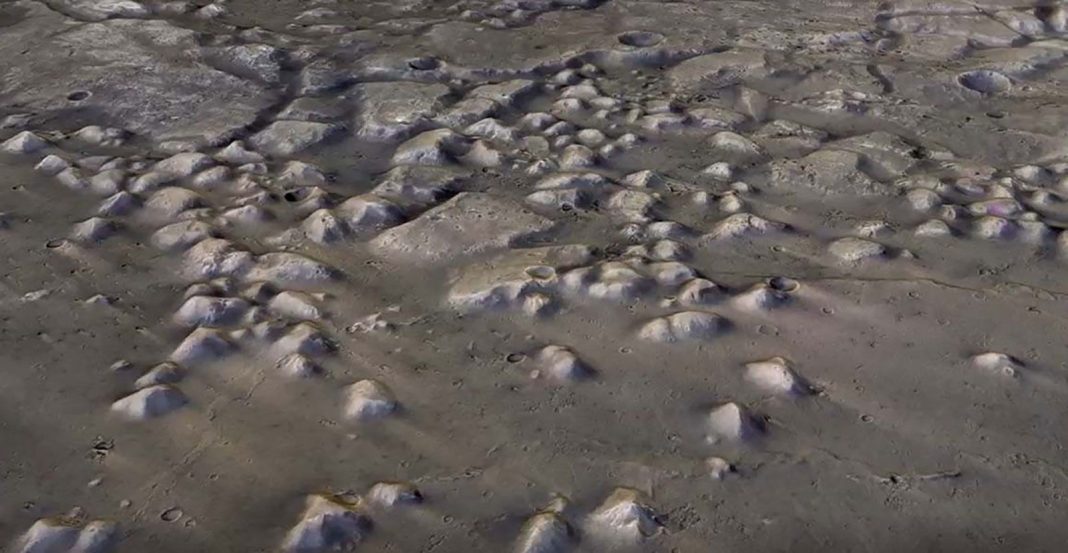Scientists have discovered thousands of hills and mounds on Mars that contain layers of clay minerals. These minerals formed when water interacted with rocks, suggesting that Mars’ northern region was once flooded with water.
“This study shows that Mars had a very different climate in the past,” said Joe McNeil from the Natural History Museum in London. “The clay-rich mounds mean that a large amount of liquid water existed on the surface nearly four billion years ago.”
Mars has two distinct regions: the southern highlands, which are ancient and rugged, and the northern lowlands, which are smoother and may have once held a vast body of water. There is now strong evidence that Mars was once warmer and wetter, with rivers, lakes, and possibly even oceans dating back almost four billion years.
McNeil’s research team has added to this evidence by identifying more than 15,000 hills and mounds—some as tall as 1,640 feet (500 meters)—that contain clay minerals, pointing to a long history of water activity.
On Earth, similar features, such as buttes and mesas, can be found in desert regions like the western United States. These formations result from millions of years of wind and water erosion. Mars has similar structures, and McNeil’s team studied a region about the size of the United Kingdom, filled with thousands of such mounds. They represent remnants of an eroded highland that once extended hundreds of kilometers into the Chryse Planitia, a lowland area in the northwestern region of Mars. Chryse Planitia, where NASA’s Viking 1 landed in 1976, was formed by an ancient impact.
The team used high-resolution images and data from NASA’s Mars Reconnaissance Orbiter (HiRISE and CRISM instruments), as well as the European Space Agency’s Mars Express and ExoMars Trace Gas Orbiter. Their analysis revealed that the Martian mesas and buttes contain layered deposits, including up to 1,150 feet (350 meters) of clay-rich material. These minerals form when water interacts with rock over long periods.
“This confirms that Mars had abundant surface water for a long time,” McNeil explained. “It could be linked to an ancient northern ocean, though this theory remains debated.”

The study also found that below the clay layers are older, clay-free rocks, and above them are younger, clay-free layers. This indicates the clay formed during a specific wet period in Mars’ Noachian era, which lasted from about 4.2 to 3.7 billion years ago and is known for the presence of liquid water.
“The mounds offer a nearly complete record of water history in this region, preserved in continuous rock layers,” said McNeil. He added that the European Space Agency’s Rosalind Franklin rover, set to launch in 2028, will explore a nearby area and could help determine if Mars once had an ocean and whether life ever existed there.
The clay-rich region is geologically linked to Oxia Planum, where Rosalind Franklin will land. Scientists are hopeful that this area offers the best chance to find signs of past life on Mars.

